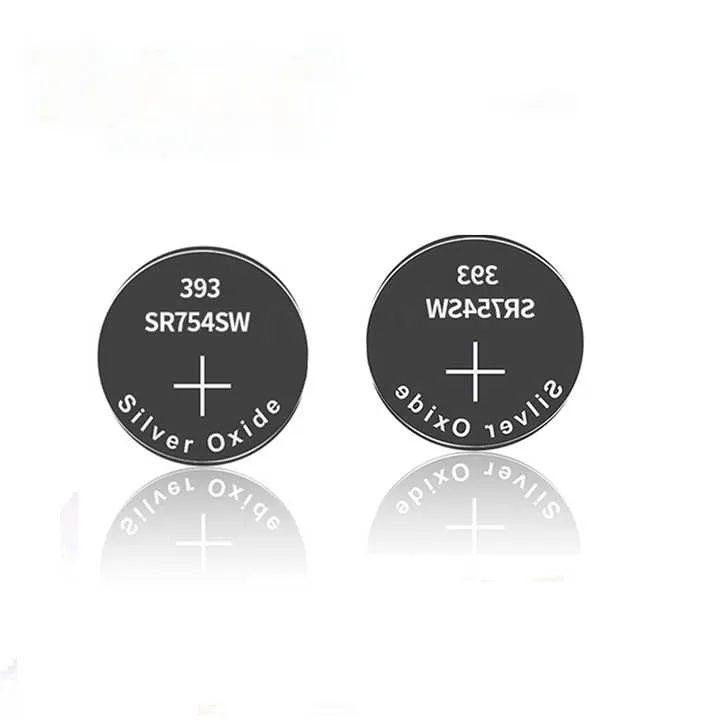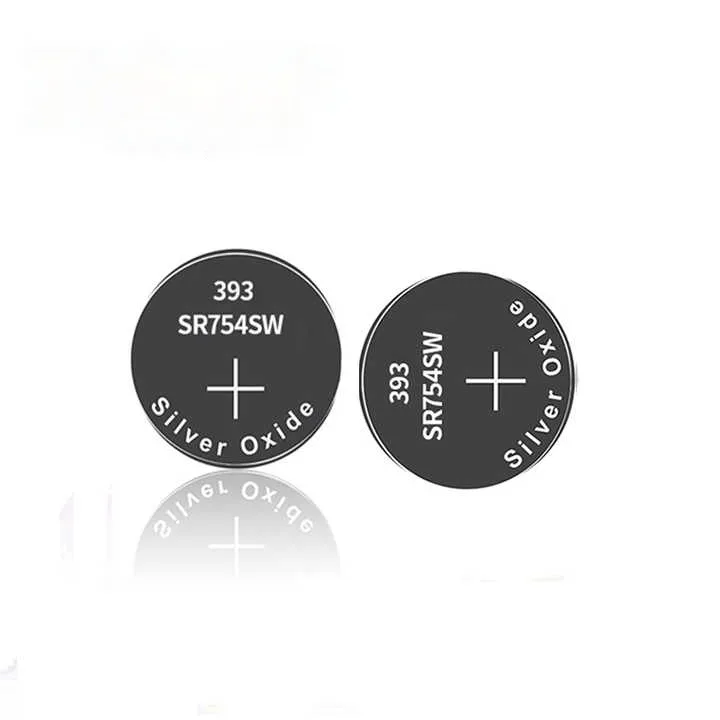Ժամանակակից մինիատյուր սարքերի էներգիայի հիմնահարցը
Այսօրվա ավելի ու ավելի կոմպակտ էլեկտրոնային սարքերի աշխարհում կոճակային բջիջներ դրանք դարձել են նվաճումների էությունը, որոնք շարժում են միկրոմինիատյուրացման նորարարությունը: Այս փոքր, սակայն հզոր էներգային միավորները հեղափոխել են մեր նորաձև էլեկտրոնային սարքերի նախագծման և օգտագործման եղանակը՝ սկսած ժամացույցներից և հաշվիչներից մինչև բժշկական սարքեր և IoT սենսորներ: Դրանց եզակի չափի, հուսալիության և էներգախտության համադրությունը դարձնում է անփոխարինելի ժամանակակից տեխնոլոգիաներում:
Քանի որ սպառողական էլեկտրոնիկան շարունակում է փոքրանալ՝ պահանջելով հուսալի էներգաաղբյուրներ, ճոճանակային մարտկոցները ապացուցել են, որ դա գործն ընթանում է լուծման ճանապարհով: Նրանց հիանալի հնարավորությունը խոշոր էներգիան փոքր ձևում տեղավորելու շնորհիվ հնարավոր է դարձրել անթիվ հաջողություններ սարքերի դիզայնի և գործառույթների մեջ: Ըմբռնել, թե ինչու են այս փոքր էներգաաղբյուրները գերազանցում, պահանջում է մտնել նրանց յուրահատուկ հատկանիշների և առավելությունների մեջ:
Ճոճանակային մարտկոցների տեխնիկական առավելությունները
Գերիշխող էներգետիկ խտություն և կոմպակտ դիզայն
Ճոճանակային մարտկոցները իրենց հիանալի արդյունավետությունը ապահովում են առաջադեմ ճարտարագիտությամբ, որն առավելագույն էներգախտուրությունն է ապահովում նվազագույն տարածքում: Դրանց բարակ, սկավառակաձև կառուցվածքը թույլ է տալիս օպտիմալ օգտագործել առկա ծավալը՝ պահպանելով կառուցվածքային ամրությունը: Այս արդյունավետ կառուցվածքը ճոճանակային մարտկոցներին թույլ է տալիս պահել էներգիա անչափ մեծ քանակով՝ չնայած նրանց փոքր չափերին, ինչը դրանք դարձնում է հիանալի ընտրություն փոքր էլեկտրոնիկայի համար:
Լրացուցիչ կառուցվածքի շնորհիվ սովորական մատակները բարձր էներգատեսքով են աչքի ընկնում: Ճիշտ նախագծված բաժանիչներով և էլեկտրոդներով այդ մատակները կարողանում են ապահովել հոսանքի հաստատուն տրամադրում ծառայության ընթացքում՝ փոքր տեղ զբաղեցնելով: Այս հուսալիության և փոքր չափերի համադրությունը հատկապես կարևոր է սարքերում, որտեղ ամեն միլիմետր կարևոր է:
Երկար պահման ժամկետ և կայունություն
Սովորական մատակների ամենահիշարժ հատկություններից մեկը դրանց երկար պահման ժամկետն է, որը սովորաբար տատանվում է 5-ից 10 տարի: Այս երկարակյացությունը պայմանավորված է դրանց լիակատար կնքված կառուցվածքով և քիմիական կայունությամբ: Կնքված կառուցվածքը կանխում է էլեկտրոլիտի արտահոսքը և պաշտպանում է միջավայրի ազդեցությունից, որը կարող է վատացնել աշխատանքը:
Կոճակային մարտկոցների կայունությունը նաև նշանակում է, որ դրանք ամբողջ կյանքի ընթացքում պահպանում են հաստատուն լարման ելքը: Այս հուսալի աշխատանքը կարևոր է զգայուն էլեկտրոնային սարքերի համար, որոնք ճշգրիտ գործողության համար պահանջում են հաստատուն էներգամատակարարում: Անկախ նրանից՝ բժշկական սարքերում է, թե ճշգրտության գործիքներում, այս հուսալիությունը կոճակային մարտկոցներին դարձնում է իդեալական ընտրություն:
Կիրառություններ և արդյունաբերական ազդեցություն
Սպառողական էլեկտրոնիկայի հեղափոխություն
Կոճակային մարտկոցների լայն կիրառումը հնարավորություն է տվել ստեղծելու ավելի փոքր սպառողական էլեկտրոնիկա: Թույլ տվող հեռակառավարումից մինչև անջատելի ականջակալներ՝ այդ փոքրիկ էներգիայի աղբյուրները հնարավորություն են տվել փոքրացնել սարքերի չափերը՝ պահպանելով դրանց գործառույթը: Հատկապես շահավետվել է մոդայի արդյունաբերությունը, որտեղ համարյա համընթաց մեծանում է համալրված զարդերի և կրելի տեխնոլոգիաների համար պահանջարկը՝ շնորհիվ կոճակ Բջջ տեխնոլոգիա.
Անձնական էլեկտրոնիկայի ոլորտում սովորական մատանեան մարտկոցները սնուցում են մեր կողմից օգտագործվող սարքերի մեծ տեսականի։ Թվային ջերմաչափերը, ավտոմեքենայի բանալիների փոքրիկ սարքերը և մարզական հետևումները ամեն մեկը հիմնված է այդ փոքրիկ էներգային աղբյուրների վրա։ Նրանց հուսալիությունը և երկար ծառայության ժամկետը նշանակում է, որ օգտագործողները կարող են հավաստի լինել իրենց սարքերի վրա երկար ժամանակ առանց հաճախադեպ մարտկոցները փոխելու։
Բժշկական և մասնագիտական կիրառություններ
Բժշկական ոլորտում մատանեան մարտկոցները կարևոր դեր են խաղում կյանքը փրկող սարքերի էներգամատակարարման գործում։ Լսողական ապարատները, արյան շաքարային չափիչները և փոքր բժշկական իմպլանտները կախված են այդ հուսալի էներգային աղբյուրներից։ Մատանեան մարտկոցների փոքր չափերը թույլ են տալիս բժշկական սարքերին աննկատ և հարմար լինել, միևնույն ժամանակ ապահովելով կարևոր գործառույթներ։
Արդյունաբերական սենսորների, չափման սարքերի և անվտանգության համակարգերի նման մասնագիտական սարքավորումները ևս շահում են սովորական մանրաէլեմենտների տեխնոլոգիայից: Այս կիրառությունները պահանջում են հուսալի էներգաաղբյուրներ, որոնք կարող են աշխատել տարբեր միջավայրային պայմաններում՝ պահպանելով փոքր չափերը: Սովորական մանրաէլեմենտները հենց այդ պահանջներին են բավարարում:

Բնավարչական և աمنական դիտարկումներ
Բնապահպանական նախագծում և արտադրություն
Ժամանակակից սովորական մանրաէլեմենտները ավելի շատ են նախագծվում շրջակա միջավայրի նկատմամբ պատասխանատվությամբ: Արտադրողները մշակում են ավելի էկոլոգիապես մաքուր տարբերակներ՝ վնասակար նյութերը, ինչպես օրինակ՝ սնդիկը, վերացնելով՝ պահպանելով աշխատանքի չափանիշները: Նախագծման այս զարգացումը արտացոլում է արդյունաբերության բնապահպանական մատայողությունը՝ հնարավորություն չտալով գործառույթների վրա ազդելու:
Լրացուցիչ փոքր չափերը նշանակում են, որ դրանք օգտագործում են ավելի քիչ հումք համեմատած ավելի մեծ մարտկոցների հետ, որը նվազեցնում է դրանց ազդեցությունը շրջակա միջավայրի վրա: Բացի այդ, շատ լրացուցիչ մարտկոցներ այժմ վերամշակվում են, և գոյություն ունեն մասնագիտական ծրագրեր, որոնք նպաստում են ճիշտ մշակմանը և արժեքավոր նյութերի վերականգնմանը: Այս կենտրոնացումը կայունության վրա օգնում է նվազեցնել կենցաղային էլեկտրոնային սարքերի ազդեցությունը շրջակա միջավայրի վրա:
Անվտանգության հնարավորություններ և ստանդարտներ
Լրացուցիչ մարտկոցները ներառում են տարբեր անվտանգության հնարավորություններ, որոնք նախատեսված են վթարների կանխման և հուսալի աշխատանքի ապահովման համար: Երեխաների դիմադրություն ցուցաբերող հարմարանքներ, պաշտպանական ծածկույթներ և կառուցվածքային ամրապնդումներ հիմա ստանդարտ են դարձել լրացուցիչ մարտկոցներում: Այս անվտանգության միջոցառումները հատկապես կարևոր են հաշվի առնելով այդ մարտկոցների լայն կիրառումը կենցաղային սարքերում:
Կոճակային մարտկոցների արտադրությունը և փորձարկումը կարգավորվում է միջազգային ստանդարտներով, որոնք ապահովում են համապարփակ որակի և անվտանգության մակարդակը տարբեր արտադրողների և կիրառման ոլորտների համար: Այդ նորմերը ներառում են քիմիական բաղադրությունը, կառուցվածքային ամրությունը և աշխատանքային բնութագրերը, որոնք ապահովում են հուսալի օգտագործում օգտագործողների համար:
Ապագայի միտումներ և նորարարություններ
Ընդհանուր տեղեկություն և տեխնոլոգիա
Կոճակային մարտկոցների ապագան ենթադրում է նոր նյութերի և տեխնոլոգիաների հետազոտությունների շարունակություն: Գիտնականները ուսումնասիրում են ավանդական էլեկտրոդային նյութեր և էլեկտրոլիտներ, որոնք կարող են բարելավել էներգախտանքը և աշխատանքային բնութագրերը: Այդ նորամուծումները կարող են հանգեցնել ավելի երկար կյանք ունեցող և ավելի մեծ հզորություն տրամադրող կոճակային մարտկոցների, որոնք պահպանում են իրենց փոքր չափերը:
Նաև սպասվում են համարյա ինտելեկտուալ կոճակային մարտկոցներ, որոնք կունենան ներդրված լիցքի հսկման և կապի հնարավորություններ: Այդ նորամուծումները կարող են հնարավորություն տալ ավելի լավ ինտեգրվել սարքերի հետ և ավելի արդյունավետ կերպով կառավարել էլեկտրամատակարարումը, երկարացնելով մարտկոցի կյանքը և բարելավելով օգտագործողի փորձը:
Ծագող կիրառություններ
Ինչպես տեխնոլոգիան շարունակում է զարգանալ, այնպես էլ սեղմակների համար նոր կիրառություններ են անընդհատ առաջանում: Առարկաների ինտերնետի (IoT) հեղափոխությունը ստեղծել է պահանջարկ փոքրիկ, երկար կյանքով ունեցող էներգաաղբյուրների համար համակարգչային զգայուն սենսորների և միացված սարքերի համար: Սեղմակները լավ տեղադրված են այդ պահանջները բավարարելու համար, որը հանգեցնում է նրանց դիզայնի և հնարավորությունների հետագա նովացումների:
Փոքր բժշկական սարքերի և իմպլանտների շուկայի աճը, ամենայն հավանականությամբ, կհանգեցնի սեղմակների տեխնոլոգիայի հետագա զարգացման: Այս կիրառությունները պահանջում են ավելի բարձր հուսալիության և անվտանգության մակարդակներ, որը ստիպում է արտադրողներին հետագա նովացումներ մտցնել:
Հաճախ տրվող հարցեր
Որքան է սովորաբար տևում սեղմակների կյանքը:
Սեղմակների կյանքի տևողությունը կարող է տատանվել 1-ից մինչև 5 տարի ակտիվ օգտագործման դեպքում, կախված կիրառությունից և օգտագործման ձևերից: Նրանց պահման ժամկետը կարող է հասնել մինչև 10 տարի, եթե ճիշտ է պահվում: Իրական կյանքի տևողությունը տարբեր գործոնների կախմամբ է, ինչպիսիք են ջերմաստիճանը, սարքի էներգահարցը և օգտագործման հաճախադեպը:
Կարելի է արդյոք վերամշակել սեղմակները:
Այո, կոճակային մարտկոցները կարող են վերամշակվել մասնագիտական մարտկոցների վերամշակման ծրագրերի միջոցով: Շատ էլեկտրոնային ապրանքների խանութներ և մարտկոցների արտադրողներ առաջարկում են օգտագործված կոճակային մարտկոցների համար հավաքման կետեր: Կարևոր է դրանք չհեռացնել սովորական աղբի հետ, քանի որ դրանք պարունակում են նյութեր, որոնք պետք է ճիշտ մշակվեն:
Կարելի է արդյոք կոճակային մարտկոցները փոխարինել վերալիցքավորվող համարժեքներով:
Շատ դեպքերում վերալիցքավորվող կոճակային մարտկոցներ կան որպես սովորական օգտագործման համար նախատեսվածների փոխարինություն: Սակայն ընտրությունը կախված է սարքի հատուկ պահանջներից, քանի որ վերալիցքավորվող տարբերակները կարող են տարբերվել լիցքի հնարավոր մակարդակով և ֆիզիկական չափերով: Նախքան փոխարինելը միշտ վերաբերվեք սարքի տեխնիկական բնութագրերին:

